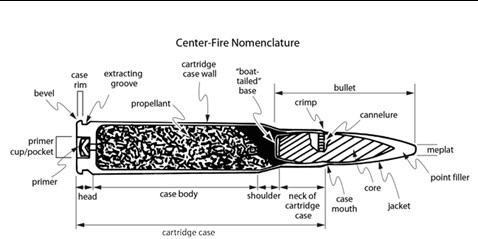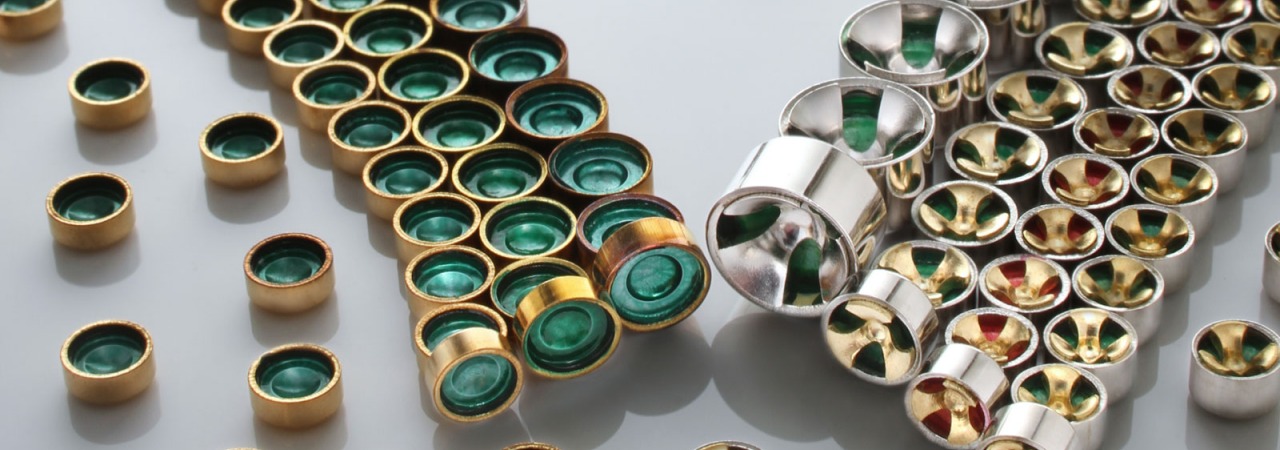4 Easy Facts About Primers For Sale Explained
Wiki Article
Winchester Primers for Beginners
Table of ContentsThe Definitive Guide to Rifle PrimersNot known Incorrect Statements About Federal Primers The 5-Second Trick For Federal PrimersPistol Primers for BeginnersThe Of Small Pistol Primers
Element of the weapon cartridge for initiating propellant burning In weapons as well as weapons, the primer () is the chemical and/or gadget responsible for starting the propellant combustion that will press the projectiles out of the gun barrel. In very early black powder guns such as muzzleloaders, the primer was basically the same chemical as the primary propellant (albeit usually in a finer-powdered form), however put into an exterior flash pan, where it can be sparked by an ignition source such as a slow match or a flintlock though some muzzleloaders have guides like cap weapon caps. primers for sale.
In artillery the guides are frequently a separate part, put inside the barrel to the rear of the primary propellant chargebut there are various other examples of weapons, including for example some automated tools, designed to shoot cartridges with integral electric primers.
Little Known Questions About Rifle Primers.

With the advent of hand-held firearms, this became an unwanted way of firing a gun. Holding a burning stick while trying to put a fee of black powder meticulously down a barrel is dangerous, as well as trying to hold the gun with one hand while at the same time aiming at the target and also looking for the touchhole makes it really hard to fire accurately. The first attempt to make the procedure of firing a little arm easier was the "matchlock".
, and dried out. After the weapon was packed and the touchhole topped with powder, the burning suggestion of the suit was positioned so that the lock would bring it right into call with the touchhole.
The 25-Second Trick For Federal Primers
This brought the match down to the touchhole, igniting the powder - https://relodprim3rs.blogspot.com/2022/10/not-known-facts-about-reloading-primers.html. With careful interest, the slow-burning match might be kept shedding for long durations of time, and also the use of the lock mechanism made fairly accurate fire feasible. The next revolution in ignition innovation was the "wheel-lock".

The covered flashpan likewise provided some capacity to withstand negative weather condition. federal primers. Wind, rainfall, and damp climate would render a matchlock pointless, yet a wheel-lock that was packed and waterproofed with a little bit of grease around the flashpan can be fired under a lot of conditions. The wheel-lock appreciated only a brief period of popularity before being superseded by a simpler, much more durable design.
An Unbiased View of Rifle Primers
The flint was held in a spring-loaded arm, called the "dick" from the similarity of its activity to a pecking hen. The penis rotated through around a 90-degree arc and was held in the tensioned, or "cocked" placement by a trigger.The "half-cock" setting held the penis midway back, and made use of a deep notch to ensure that pulling the trigger would not release the penis. Half-cock was a safety and security position, made use of when loading, keeping or carrying a loaded flintlock. The "full-cock" setting held the cock completely back and also was the setting from which the gun was discharged.
It worked as both a flashpan cover and also a steel striking surface for the flint. The frizzen was pivoted as well as spring-loaded to make sure that it would lock in the open or shut setting. When shut, the striking surface area was placed so that the flint would strike at the proper angle to produce a stimulate.
Rifle Primers Things To Know Before You Get This
The flintlock system was less complex as well as stronger than the wheel-lock, and also the flint and steel provided an excellent, trustworthy resource of ignition. The flintlock stayed in armed forces solution for over 200 years, and flintlocks are still made today for historical re-enactments and muzzle-loading target competitors, and for seekers that appreciate the extra challenge that the flintlock provides.By the center of the 19th century, the percussion or caplock system was well established., as it was simpler and also a lot more dependable than click to investigate the flintlock.
The flashpan as well as frizzen were eliminated as well as changed by a small, hollow horizontal cylinder (drum) screwed right into the bored-out and touched flash opening and carrying a "nipple area" over which the cap could be fitted. A "hammer" which also had half-cock (for packing and applying the cap) and also full-cock positions changed the cock.
Report this wiki page